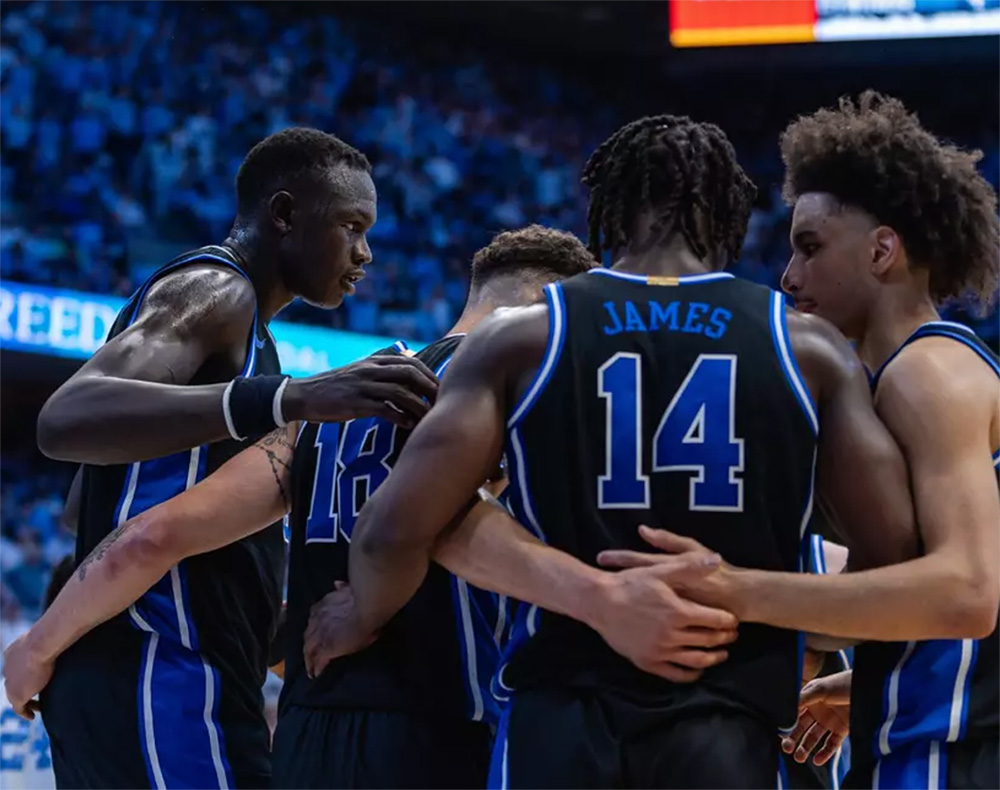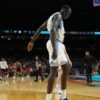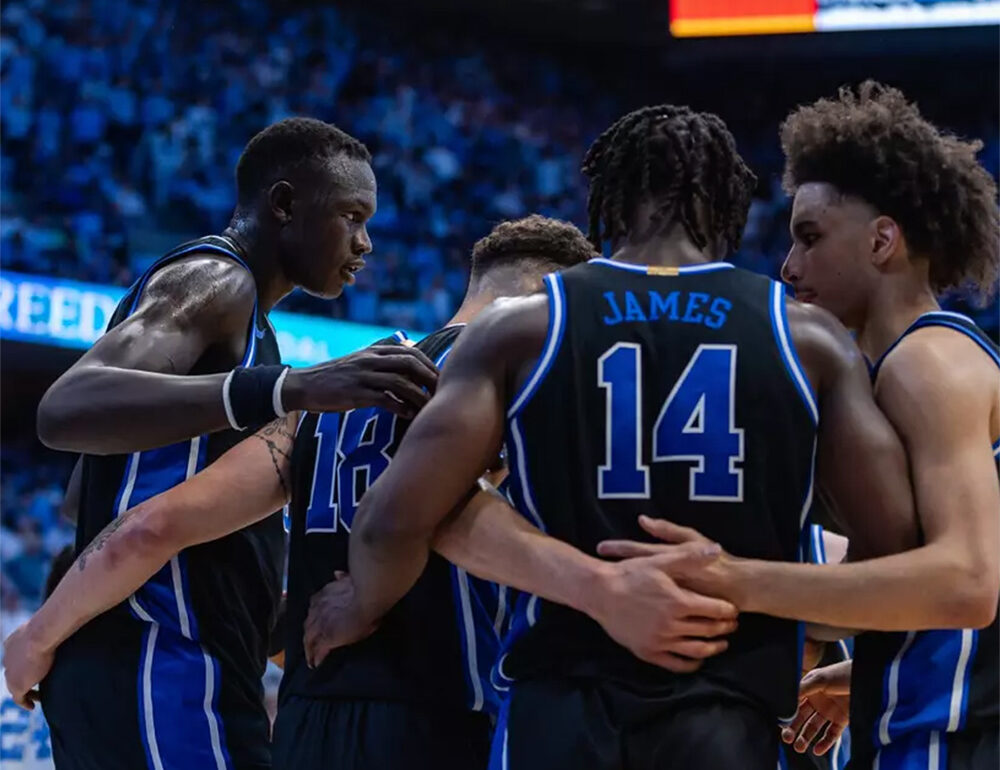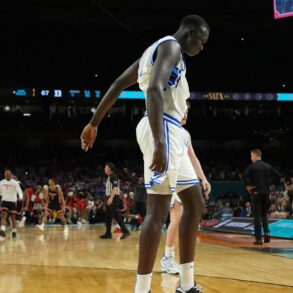Blue Devils fans are still making sense of Duke’s stunning late-game loss to Houston in what was a wild Final Four game.
But for some fans of men’s college hoops, predicting this season’s nail-biters, closest contests — and even the biggest blowouts — was a worthwhile competition in itself.

In the first-ever Triangle Sports Analytics competition, 15 teams of undergraduates and master’s students from Duke, UNC and NC State competed to make predictions about the 2024/25 ACC basketball season, and in a way most armchair fans don’t — using data science.
For these contestants, it wasn’t just a question of which teams would survive and advance.
The idea was to predict not only who would win, but by how much. That number is called the point spread. Anyone who wanted to compete had to submit, back in January, their point spread predictions for each of the remaining regular season games involving any one of the three Triangle teams. Everything from the razor-thin margins to the landslides. The winners were the ones whose predictions most closely mirrored the results.
They also had to come up with a confidence interval for their spreads, based on probability and the data at their disposal. In a nutshell, it’s a way to show how reliable their estimates were by saying, “we’re pretty sure the real margin of victory is somewhere between X and Y.” Teams that predicted the point spreads more accurately were given an edge.

“Predicting results weeks or months in advance is a really difficult task,” said Duke statistical science professor Alexander Fisher, who co-led the competition together with professors Mario Giacomazzo of UNC and Elijah Meyer of NCSU.
You don’t need to be an expert coder to enter. “We have some tutorials and resources to get you started, even if you have little to no experience programming,” Fisher said.
“The two skills that are really emphasized in a competition like this are data wrangling ability and model building,” he added. And while data skills are important, it’s just as critical to “love the game and be creative.”
One student who used his passion for the game and penchant for data crunching to test his mettle was Chris Johnson ’25, a senior majoring in economics.
“I’ve been watching college basketball since I was a kid,” Johnson said. “March Madness is my favorite time of year.”
To make his predictions, Johnson used Barttorvik.com, a website that contains a wealth of college basketball data. He built a model in Python that took into account statistics on each team’s offensive prowess and defensive strength, along with the pace at which they tend to play. Using these, he was able to estimate the final points for each team and calculate the point spread from there.

Of course, data and statistics can only capture so much of what makes basketball exciting — the unquantifiable human element also plays a role. Factors such as injuries and roster shifts can also have a significant impact on the outcome of a game, but they’re hard to anticipate in advance, Johnson said.
This year, the top three teams in the Triangle Sports Analytics competition were all from Duke. “I think we had a pretty sweeping victory this year,” Fisher said.
There’s no prize money; “this was just a ‘do it for the glory’ competition,” Fisher said.
“Bragging rights are really important,” said Dillan Sant, co-president of the Duke Sports Analytics Club, in a workshop he and co-president Anmol Sapru hosted to help students prepare for the competition.
Johnson finished first in this year’s contest, which didn’t include the NCAA tournament. So what was his reaction to Duke’s loss in the Final Four?
“The ending was definitely surprising,” said Johnson, who will be going on to a career in sports analytics after graduation, working as a data analyst for DraftKings.
“Any statistical model would tell you that Duke had more than a 90% chance of winning going into the final two minutes,” Johnson said.
“Pretty sad being a Duke fan, but it’s also part of the craziness and unpredictability that makes college basketball fun in the first place,” he added.

This post was originally published on this site be sure to check out more of their content.










